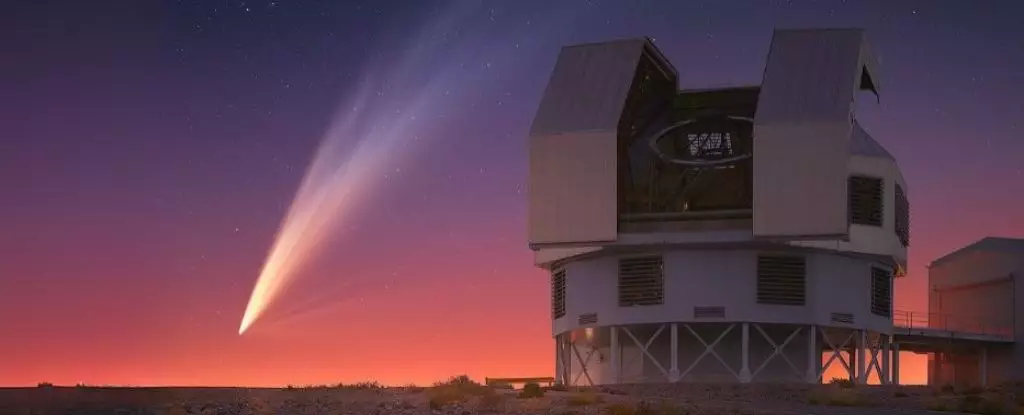Comets have always captivated the human imagination. They serve as reminders of the universe’s unpredictability and complexity, often taking both amateur and professional astronomers on a breathtaking quest through the skies. The anticipation surrounding the arrival of a new comet can be likened to waiting for a much-anticipated performance—there’s excitement over what it may reveal and trepidation about its potential to underperform. Much like a highly anticipated movie’s premiere, the celestial arrival of Comet C/2024 G3 ATLAS ignited this mix of intrigue and anxiety among astronomers and stargazers alike.
Discovered on the evening of April 25, 2024, by the Asteroid Terrestrial-impact Last Alert System (ATLAS), this comet quickly became a subject of intense scrutiny. With predictions claiming that G3 ATLAS might become significantly bright around its perihelion in early 2025, the stakes were high for astronomers eager to witness its ethereal beauty. However, the comet’s trajectory left room for uncertainty—a hallmark of cometary behavior, as illustrated in past experiences with certain comets like C/2012 S1 ISON. Observers recall the disappointment of ISON’s disintegration just before it could amaze the crowds.
Conversely, there was success with W3 Lovejoy, which not only survived its perilous close approach to the Sun but thrived afterwards, becoming visible and delightful to those in the southern hemisphere. Such contrasting fates made the growing anticipation for G3 ATLAS even more palpable.
The comet reached perihelion on January 13, 2025, merely 14 million kilometers from the Sun. As it approached, observatories, including SOHO’s venerable LASCO C3 imager, documented G3 ATLAS glowing at an impressive magnitude of -3.8—its brightness matching that of some of the most memorable comets in recent history. Enthusiasts were eager to capture images that displayed the comet’s fascinating structure, particularly its delicate dust tail that flourished as it traversed through space.
However, like many bright comets, G3 ATLAS’s spectacular performances were predominantly witnessed from southern latitudes, leaving northern observers feeling left out. Though a few committed astrophotographers spotted the comet’s dusty streaks in the dusk sky, the elusive glimpse of G3 ATLAS was more a memory of what could have been.
One of the most intriguing aspects of G3 ATLAS was the way its tails—comprised of dust and ions—were affected by solar winds, causing them to trail the comet as it barreled through the solar system. The tails became more pronounced as it ventured into the inner solar system, forming a vibrant, striped appearance that offered a magnificent visual treat, albeit enhanced by unfortunate perceptions of a diminished nucleus. Observations taken soon after perihelion revealed a disconcerting transformation; the nucleus seemed to weaken, leading to the phenomenon known as a ‘headless comet.’ The fading core, however, could not overshadow the external show of brightness that captivated observers.
As of late January 2025, Comet G3 ATLAS remains in the constellation Piscis Austrinus, visible at around +5 magnitude. Its trajectory has been characterized as one arriving on a 160,000-year orbit towards the Sun before it embarks on a lengthy, outbound journey estimated to last 600,000 years. With potential fragments breaking away, future generations might yet witness remnants of this comet gracing the skies, albeit on a distant return.
The excitement surrounding Comet G3 ATLAS is a reflection of the larger narrative of cometary studies—a blend of hope and uncertainty. As observers speculate about the potential for future encounters with this celestial wanderer, the thrill of searching the cosmos for these elusive objects remains a deeply enriching endeavor. For now, skywatchers are left marveling at the distant artistry of G3 ATLAS, eagerly awaiting the next cosmic visitor that will swoop down from the depths of space to ignite our collective curiosity.



Leave a Reply